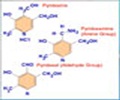A form of vitamin B3, nicotinamide was found to help treat fibrotic eye diseases and mitigate vision loss, stated new study.

‘Nicotinamide, a form of vitamin B3 not only inhibits the cell transformations, but can also reverse that cell transition and slow down the development of eye diseases that may lead to vision loss or blindness.’





When applying nicotinamide as a therapy to human adult cells in vitro, the researchers found that the vitamin B derivative slowed down the aggressive cellular transformation and could promote the opposite transition, from mesenchymal to epithelial, helping to preserve the cell's original identity. "This is the first study that shows how nicotinamide can inhibit invasive wound healing, but also reverse the development of membranes associated with scar tissue," said Timothy Blenkinsop, PhD, co-lead investigator of the study and Assistant Professor of Cell, Developmental and Regenerative Biology at the Icahn School of Medicine at Mount Sinai. "This discovery helps evolve our understanding of wound healing, as well as good inflammation versus bad inflammation. Good inflammation essentially nudges the system into a regenerative response, while bad inflammation can create harmful scar tissue formation. This is an exciting time to understand how this compound can be used to treat and reverse not only fibrotic diseases of the retina but other diseases too."
The researchers also identified epigenetic and molecular changes that occur during the cell transition process. Nicotinamide therapy resulted in widespread changes in the DNA sequence of the cells, eliciting changes in more than 40,000 identified chromosomal regions. The scientists observed that nicotinamide was associated with massive reorganization of the cell patterns, especially with inducing enhancer elements that lead the cell stage change in the retina. It activated regulatory elements in cells, including transcriptional factors that are prominent regulators of cell transformation.
Sally Temple, PhD, co-lead investigator of the study and Scientific Director at Neural Stem Cell Institute, said the study paves the way to develop new forms of treatment for patients. "Now we know the epigenetic landscape that is associated with the changes activated by nicotinamide, which gives deeper insights into cell transformations and provides an opportunity to explore a pathway for new therapeutic approaches for any condition or complication associated with wound healing."
Source-Eurekalert















